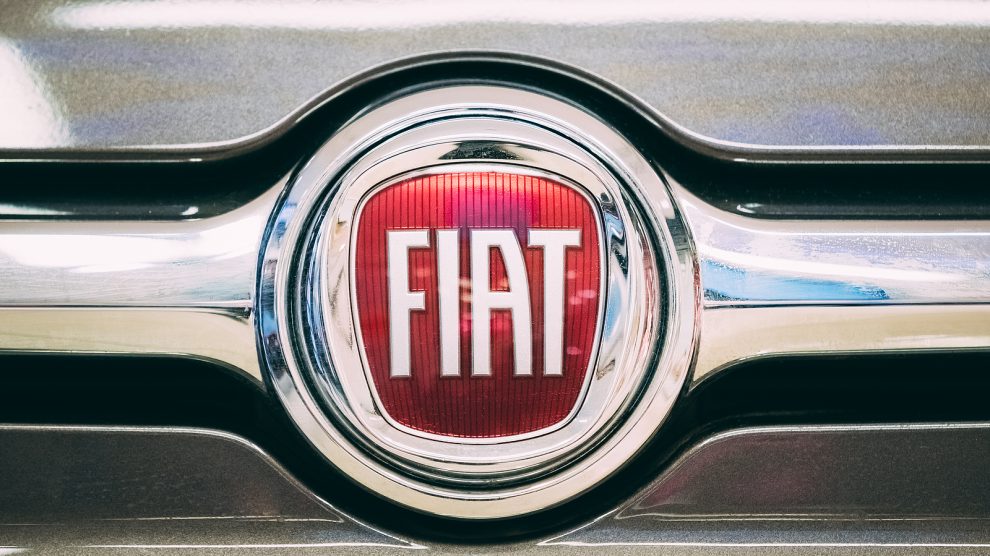Serbia is about to start making electric cars, as well as supplying the lithium that powers them.
Last week, it was lithium that created positive headlines for Serbia across Europe, when the country was given the backing of the European Union to go ahead with a lithium mine in the Jadar Valley the west of the country.
This week, the country was hailed by car giant Stellantis, which includes the Alfa Romea, Citroen, Fiat, and Opel brands in its stable, as central to its ambitions to compete with Chinese makers of electric vehicles.
- CEE can put itself at the heart of the global supply chain
- For makers of electric vehicles, emerging Europe is increasingly the place to be
- New Ionway investment cements Poland’s position as key EV battery hub
On Tuesday, Stellantis unveiled its electric Fiat Grande Panda car in the Serbian city of Kragujevac, where it has invested almost 200 million euros (including a subsidy of 48 million euros from the Serbian government) in a plant that is expected to begin full production in October, employing 1,000 people.
Serb President Aleksandar Vučić said that next year’s output at the Kragujevac plant would contribute 0.5 percentage points to the country’s GDP growth.
“We are going to be challenged and I would say brutally challenged by the Chinese offensive on the European market,” Stellantis CEO Carlos Tavares said on Monday, speaking with Vučić at the Kragujevac plant. “At Stellantis we are ready for the fight.”
“This is a huge opportunity for us. We are the only country in the Western Balkan region that has electric car production,” said Vučić.
‘Driving forward the green transition’
On Friday, Vučić was entertaining German Chancellor Olaf Scholz and European Commission Executive Vice-President for the European Green Deal Maroš Šefčovič, who signed a memorandum of understanding launching a strategic partnership on sustainable raw materials, battery value chains and electric vehicles.
The partnership aims to support the development of new local industries and high-quality jobs along the electric vehicle value chain in full respect of high environmental and social standards while addressing the concerns of local communities with full transparency.
It also provides the framework for a strong public-private multi-level engagement between the EU institutions and bodies, industrial actors, business associations, social partners, representatives of civil society, relevant ministries of interested EU member states and Serbia, public organisations, financial institutions, and investors.
The previous Tuesday, Serbia restored mining giant Rio Tinto’s licence to extract lithium in the Jadar Valley. Serbia’s leadership scrapped the ban after a court ruling last week declared it to be unconstitutional. The government imposed the moratorium in 2022, after extensive protests across the country.
The decision means that the Jadar Valley mine, which Rio Tinto says could provide as much as nine-tenths of Europe’s current lithium needs, can now go ahead.
“The memorandum of understanding between the EU and Serbia on sustainable raw materials, battery value chains, and electric vehicles is a testament to our shared commitment to driving forward the green transition,” said Šefčovič.
“Through strategic collaboration in these key sectors, we unlock immense potential for sustainable growth and innovation, while also enhancing Serbia’s integration with the EU’s single market and further boosting its economic, social and environmental convergence with the EU.”
Scholz meanwhile said that the mine would help to defend Europe’s economic security and that, he wanted his country’s automotive industry to be, “at the front of the queue for supplies”.
The global demand for lithium, used to make the batteries for electric vehicles, as well as mobile phones, is predicted to rise over 40 times by 2040, driven predominantly by the shift to electric vehicles.
Australia is currently the world’s largest supplier of lithium (around 86,000 tonnes per year), followed by Chile (44,000 tonnes) and China (33,000 tonnes). Rio Tinto claims that the Jadar Valley mine can supply as much as 58,000 tonnes per year.
Environmental opposition
Rio Tinto says that the mine, set to be active by 2028, can be developed safely, “adhering to the highest domestic and international environmental protection standards”.
It recently released the preliminary drafts of the Jadar Project Environmental Impact Assessment (EIA) studies to allow the public to assess the potential environmental impacts and mitigation measures.
Environmental NGOs, who have been protesting against the mine for years, remain unconvinced.
BankTrack, an international NGO support organisation focused on banks and the activities they finance, said last year that Rio Tinto has consistently underestimated local and national opposition to the Jadar project despite huge public protests and continuing opposition from hundreds of property owners who refuse to sell.
The mine, it says, poses pollution risks to Serbia’s largest source of drinking water. Local NGOs meanwhile have already restarted protests against the project—a march against the mine, attended by thousands of people, was held in the town of Valjevo on Tuesday.
Serbia’s government and Rio Tinto may have won over the European Union, but it is clear that it will take a lot more to gain the support of those who be most impacted by the mine.
Unlike many news and information platforms, Emerging Europe is free to read, and always will be. There is no paywall here. We are independent, not affiliated with nor representing any political party or business organisation. We want the very best for emerging Europe, nothing more, nothing less. Your support will help us continue to spread the word about this amazing region.
You can contribute here. Thank you.







Add Comment